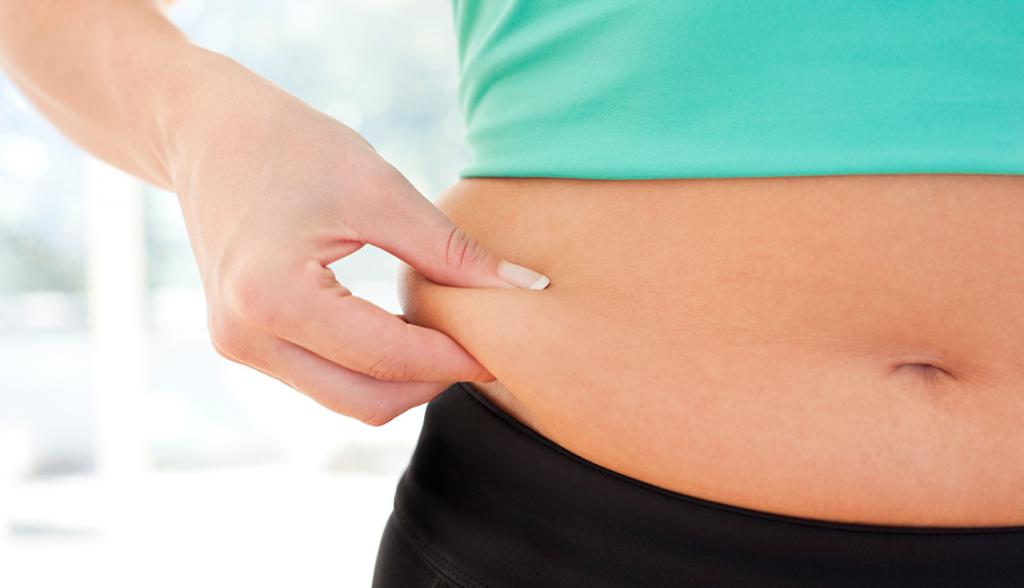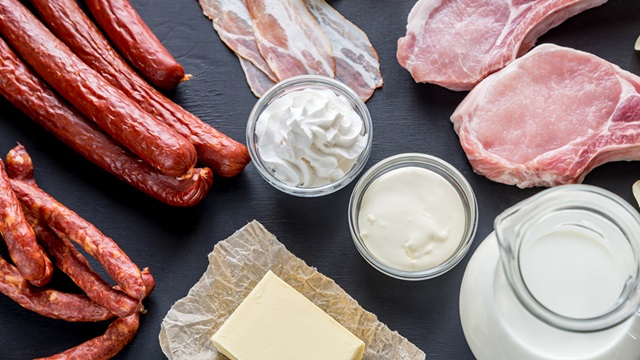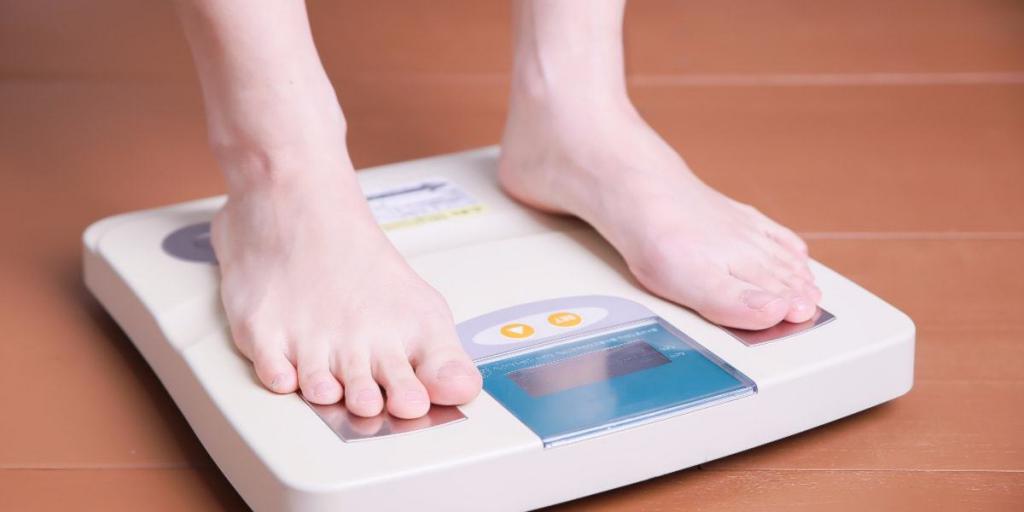To maintain your body in perfect shape, you must carefully monitor your diet. Each meal should contain the amount of protein, fat and carbohydrates necessary for the human body. Before giving up a certain meal, think about why our body needs certain substances. Today we’ll talk about why fat is needed, what its benefits are, and what the harm is, what foods contain healthy fats, and which ones should be discarded.

Fats are, first of all, energy!
For any organism, these substances are energy suppliers. Carbohydrates and proteins also produce energy, but it is fats that produce it twice as much. One gram of fat accounts for about nine kilocalories of energy. Each cell of our body contains this substance in its composition.
What is fat for? It is indispensable in the metabolism, and also performs protective functions for our body. The peculiarity of the substance is that it is stored in reserve, but at the same time it supplies the body with the necessary nutrients, saturates the person with energy and saves from hypothermia, as it performs the function of thermoregulation.
What types of food fats are divided into?
The following fatty acids are distinguished:
- Saturated or ultimate.
- Unsaturated, respectively unsaturated.
The first animal origin. They are solid. This includes stearic, butyric, palmitic acid.
The second is vegetable. They are in liquid form (oils). These are arachidonic, linoleic, oleic, linolenic acids. They are necessary for the human body for its normal performance.
Polyunsaturated fats
What are fats in nutrition for? These fatty acids are essential for every person, regardless of age and gender. They help the body grow and develop, affect the proper functioning of internal organs, have a positive effect on muscles, blood, participate in the work of enzymes.
Lack of such acids leads to depletion of the body. The human body lacks energy, ulcerative diseases of the gastrointestinal tract are formed.
But do not think that a lot is good. An excess of polyunsaturated fatty acids can lead to coronary thrombosis, which can threaten a person’s life. The body should consume about 15 grams of such fats per day (somewhere around 1.5 tablespoons of vegetable oil).

Foods rich in linolenic and linoleic acid
Most of all such acids contains sunflower oil (about 60%). A good proportion of them can be found in soybean, cottonseed and corn oils (about 50%). The well-known olive oil contains only 14% polyunsaturated fatty acids. Animal fats contain only a small fraction of linoleic acid, for example, in butter, about 4%.
Where can arachidonic fatty acid be found?
This acid is capable of producing the greatest amount of energy for humans. The list of products containing it is small, but the body requires up to five grams per day of its use. It occurs in animal fats, but in scanty amounts. In butter or lard, its share is not more than 0.2-2%.
A sufficient amount of arachidonic acid in fish oil (about 30%), as well as in marine fish. Vegetable fats do not contain this acid, but the human body is able to process linoleic acid into it and thereby cover its needs.

Do harmful fats exist in the body?
Yes! These are fatty substances. From 50 to 90 grams of sterols (organic substances involved in fat metabolism) are accounted for per person, and about 97% is cholesterol. At the same time, this substance is distributed unevenly throughout the body. An insignificant amount contains the liver - 1%, a little blood - 6%, but the largest amount of cholesterol is contained in the nervous tissue. An excess of the substance leads to atherosclerosis, which is caused mainly by a sedentary lifestyle and overeating. And our food products, which we love so much, contain a huge amount of this substance in their composition. This is a variety of processed cheese, egg yolk, fish oil, beef liver, butter. A blood test will help detect the presence of cholesterol, and if the indicators are too high, then you should refuse the above foods. Plant sterols, which are found in vegetable oil, bran and cereals, will help lower cholesterol.

Subcutaneous fat: what is it for?
The fat is located under the upper layer of the skin. What is fat for? Indeed, many are trying to get rid of excess adipose tissue and sagging abdomen. Diets are now in the first place for most beauties. Cellulite looks ugly, nevertheless, there are many functions of fats in the body. The first and main is the maintenance of mental and physical activity. With a lack of energy, the body begins to actively burn fat cells, thereby obtaining the necessary activity for itself. Fats are always stored in reserve in case of hunger strike or intense physical exertion.
What is body fat for? Grease under the skin protects internal organs from external influences. It softens the force of impact during a fall, puts the unit away from high temperatures and warms in cold weather conditions. Animals living in the northern latitudes have a thick fat layer. Fats make the epidermis supple and protect against tearing. Subcutaneous fat helps retain heat in the body. Obese people have a hard time in hot weather. They sweat profusely, feel insecure and uncomfortable.
What is fat for? It accumulates beneficial substances in itself. First of all, these are vitamins A, E and D - they are fat-soluble. Also, female hormones accumulate in adipose tissue, which is why men with an excess of it have female outlines.

How much fat should a human body contain?
For women, the ideal content is from 15 to 30%, for men a little less - from 14 to 25%. There are several ways to measure subcutaneous fat:
- The simplest, but not the most accurate method is ordinary floor-mounted digital scales. You just need to stand on them and look at the result displayed on the screen.
- With a tool for measuring body fat. It is called a caliper. The data that is obtained is compared with a special table. The measurement area is the navel area (10 cm each way). The fat fold is fixed and measured with a caliper. The result obtained is looked at in the table.
- Immerse yourself in a bath of water. The displaced volume of water is compared with the weight and the percentage of fat is calculated. The method is the most accurate, but it is problematic to conduct it at home, so the help of specialists will be required.

What is the danger of being overweight?
The value of fats in the body, we found out, but what if there are more than necessary? Excess fat not only spoils you visually, but also threatens your health. Disturbed hormonal levels in men entail sexual dysfunction. Testosterone levels decrease, and the man becomes like a woman.
Overweight is accompanied by diseases such as diabetes mellitus, atherosclerosis, hypertension and osteoarthritis. Fat disrupts motor activity, as a lot of pressure is applied to the spine and joints.
What is the danger of lack of adipose tissue?
The biological significance of fats in the human body is to protect it. For women, a lack of fat is fatal, since it is the female body that synthesizes and stores the hormone estrogen. With an insufficient amount of fat, the menstrual cycle is disrupted, which threatens the lady with infertility. Women and girls who are underweight constantly feel tired, drowsy, cold, their skin is getting worse.
Tips for those who want to lose weight
We comprehensively looked at why a person needs fats, but if you want to reduce their amount a little, then before you start a weight loss course, remember that body fat is distributed in different ways. A large role is played by genes and body type. In women, fat predominates in the abdomen, buttocks and thighs. In men, this is the abdomen and chest. In order for fat to be burned, you must use the following tips:
- Reduce or completely eliminate from the diet foods that stimulate the formation of body fat. This includes fatty meat, bakery products, sweets, drinks containing gases.
- Build your nutrition on complex carbohydrates and good protein. These are chicken, turkey, durum wheat pasta, rice, buckwheat and, certainly, vegetables.
- Eat should be up to six times a day, at regular intervals, in small portions. With a small amount of calorie, the body will process food immediately, and not put it off for storage as fat reserves.
- Lead an active lifestyle, move more. Fat accumulates gradually, therefore, getting rid of it is also worth it slowly. If you follow the diet and exercise, the result is sure to please. The best fat burners are swimming, cycling and running.
- Pay attention to your appearance - massage, contrast shower, bath.
- Do not abandon the work you have begun, sometimes, so that the weight moves down, not even a month is enough. Think about it, because you have gained your weight over the years, harmony will not come immediately either.
- Remember the problems of fat deficiency. Hurry to stop in time, do not get involved in diets.
- Do not forget about the rest. You need to sleep at least 7 hours, because it is the dream that restores strength, improves metabolic processes.

As we have learned, there are many functions of fats in the body, and they all play important roles in human life. The main thing is to remember that both an excess and a lack of fat negatively affect the body. Therefore, love yourself, keep your shape, do not give up - and then you will have a perfect body, and with it health. Do not starve yourself, during this period the fat will really go away, but it will leave a bouquet of diseases, problems with skin, bones, teeth and hair. Do not ruin yourself, lose weight correctly and healthy!